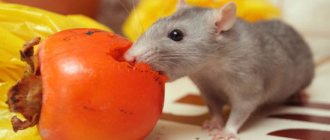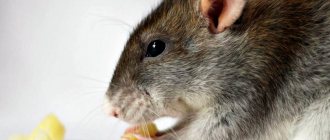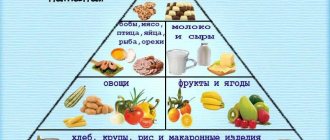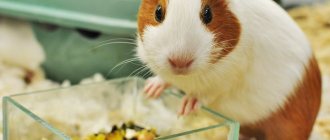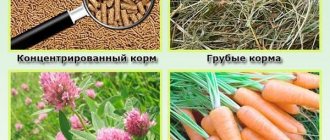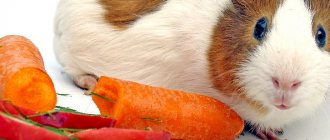One of the exotic ways of earning money, which allows you to get a good income with a small investment, is chinchilla breeding. They are valued for their valuable fur, which has the ability to resist moisture, but in most cases today they are not bred on an industrial scale, requiring the killing of animals, but are sold live in small batches for keeping as pets, which makes such a mini fur farm more attractive for those who wants to start a profitable small business.
Chinchilla breeding as a business
CHINCHILLA RECIPES
RECIPES OF CHINCHILLA DISHES
Treasure hunting shish kebab
3-year-old chinchilla, 400 g each, 3 large onions, soak for 30 minutes, marinate in wine for 30 minutes. With bay leaf. Thread onto a skewer and fry for 40 minutes.
Chinchilla with potatoes, treasure hunter style
Line the bottom of the pan with chinchilla meat. Place a layer of onions on top. The top layer is potatoes. Pour in 1 cm of sunflower oil, bay leaf, spices to taste. Cover with a lid and simmer for 40 minutes.
This text is an introductory fragment.
Continuation on liters
Read also
CHARACTERISTICS OF CHINCHILLA FUR
CHARACTERISTICS OF CHINCHILLA FUR Since ancient times, the right to wear chinchilla clothes belonged only to the royal family; fur was a sign of wealth and high social status. The desire to wear this fur at the end of the 19th century became the reason for almost universal
CHINCHILLA BUILD
BUILD OF A CHINCHILLA We call the general shape of a chinchilla's body. Ideally, all newly purchased chinchillas, as well as animals intended for breeding, should undergo a conformation assessment. When assessing a chinchilla's build, pay attention to three parts of the body: the head,
ADVICE OF THE PRINCE OF TRADE DIGGERS YURI KHARCHUK ON KEEPING A CHINCHILLA
ADVICE OF THE PRINCE OF TRADE DIGGERS YURI KHARCHUK ON KEEPING A CHINCHILLA We offer breeding of indoor animals – chinchillas. The most expensive fur in the world! The size is 2-3 times smaller than a rabbit, and they eat almost everything that rabbits eat, but an order of magnitude smaller: potatoes, vegetables, grain, herbs, hay,
Camping recipes
Recipes for camping meals Weekend hikes are available to everyone. As a rule, tourists participate in them with their whole family. Such a hike is a holiday, especially for children. Therefore, from the point of view of nutrition, tourists try to make their diet festive, especially since in such
Recipes
Recipes Carp in beer in German 0.5 kg carp, 20 g fat, 10 g flour, 20 g gingerbread, 10 g onions, 40 g beer, 3 cloves, salt. Fillet the fish, remove the bones, cut into portions and simmer until ready. From flour and sautéed onions dipped in beer, pounded gingerbread and
Secrets of delicious dishes
Secrets of delicious dishes So that leaf salad does not lose its taste. Lettuce should be washed under running cold water, then let the water drain and dry the salad with a towel. Save vitamins in lettuce. To preserve the vitamins that salad leaves are rich in, cut them
Snack Recipes
Appetizer recipes Verkhovazhski-style ham with green beans For preparation you will need: 750 g bean pods, 750 g raw, thinly sliced potatoes, 150 g unsmoked ham, 3 chicken eggs, 1/4 l fresh milk, pepper, salt, lemon juice, 2 Art. spoons of grated
Source
Chinchilla breeding business: profitable or not
Today, chinchilla breeding as a home business is a type of entrepreneurship that has no competitors. Many farmers are interested in raising chinchillas; they ask questions: is it profitable to breed chinchillas, what is needed for business, where to start planning, how to organize the sale of products. Answers to these questions, as well as reviews from experienced entrepreneurs, can be found in this article.
Advice from veterinarians and experienced owners: how to toilet train a chinchilla
It is best to use purchased wood filler for the animal's tray. If the chinchilla does not want to go to the toilet in the designated container and leaves its marks throughout the cage, the owners need to start training the pet. To do this, every time the animal leaves its “mark” on the bottom of the cage, you should take a certain amount of filler, wipe the affected area with it and put the sawdust back into the tray. Soon the chinchilla, based on the smell, will understand where it needs to go to the toilet.
Thus, the answer to the question of whether it is possible to train a chinchilla to use a litter box is positive. But how often should you change the litter in an animal’s toilet? It is advisable to carry out this procedure every day. In this case, only the contaminated part of the filler can be changed.
Breeding chinchillas: let's weigh the pros and cons
Advantages of chinchilla business
- This is a relatively free niche in the Russian business sector.
- The demand for our products is constantly growing.
- Good profitability: the cost of maintaining an animal for up to 2 months does not exceed 1 thousand rubles, and the income from each individual is 15 thousand rubles.
- You can start from scratch with minimal effort and without investing a lot of money.
Farm maintenance costs
- Purchase of rodents: at least 10 females and a couple of males (100-150 thousand rubles).
- Home improvement: purchasing equipment (cages and much more can be made with your own hands).
- Food expenses: on average 10 thousand rubles per year per head.
- Electricity costs: light, air conditioning, convector.
- Taxes to the state, state duty for business registration.
- Advertising (may not be required if there are established sales channels).
Comparison with other types of fur-bearing animals
Chinchillas reproduce worse than rabbits and produce no more than 3 cubs in one litter. But chinchilla skin is much more expensive than rabbit skin, because it surpasses it in quality and beauty.
Chinchilla fur is not as durable as mink fur, but a mink coat costs less because it is inferior to a chinchilla coat in several respects: softness, lightness and color range.
Possible risks
- Diseases. The risk of developing the disease in the entire population is very low, since chinchillas have good health and are naturally hardy animals. Serious deficiencies in the care and feeding of pets can lead to an epidemic.
- Lack of distribution channels. This problem will not arise if you think everything through in advance.
How to organize a business
Purchase of animals and equipment
To start breeding chinchillas at home, you need to purchase the animals themselves and arrange a place for keeping them. For this you will need:
- Cages: 1 cage for 2 rodents, it is recommended to place cages in 2 rows of 6 pieces each, minimum room area – 18 sq.m.
- Drinkers, feeders, hay bowls: nipple drinkers and hanging feeders protect food and water well from contamination.
- Houses and beds: animals need a place for privacy; the size of the bed should not be less than 12 cm in width.
- Filling: Sawdust, shavings or hay.
- Bathing suits and sand: you cannot skimp on sand; the quality of the fur will suffer as a result.
- Toys and exercise equipment for teeth: grinding teeth is vital for rodents; the ideal option is a mineral stone.
- Cleaning and disinfection products: non-toxic specialized products and ultraviolet lamp.
- Convectors: maintaining optimal humidity levels.
- 60 W lamps: per 1 sq.m. 1 lamp required.
- Air conditioning and heater: temperature control.
- Feed and hay.
Business plan
A business plan will help you keep everything under control and get the maximum benefit from your new venture.
First, you should start calculating potential profits: from the amount of expected income (calculated by predicting the receipt of offspring), subtract the amount of estimated costs for the preparation and monthly maintenance of rodents.
Approximate costs of maintaining a livestock of 50 chinchillas:
- Chinchillas - 100-150 thousand rubles.
- Cages – 2 thousand rubles X 25 (2 animals per cage) = 50 thousand rubles.
- Feed – 1,000 – 1,500 rubles per day.
- Other expenses (electricity, taxes, veterinary care, advertising, etc.) – 20 – 30 thousand rubles.
- The income from 50 chinchillas is easy to calculate: offspring of 300 puppies per year will bring about 1 million rubles.
When drawing up a business plan, you should take into account that breeding animals cost about $100, which is 2 times more expensive than pets, and the cost of a skin is approximately $80.
Sales of products
Sales channels
Sales of products are possible in three directions:
- breeding animals to other farms;
- skins in studios and factories, as well as at auctions;
- dietary meat can be sold by advertisement or delivered to restaurants;
- small individuals to pet stores.
Beginning entrepreneurs and farmers whose production is constantly growing may need advertising. For these purposes you can use:
Do chinchillas eat meat?
Chinchilla meat is eaten, it is dietary and medicinal. It is recommended to be used for cancer, sclerosis and tuberculosis.
Carcasses are sold after the animal is slaughtered for fur.
It is not profitable to specifically raise animals for meat, because even a novice farmer knows how much a rodent weighs—at best, the animal’s weight reaches 1 kg.
Chinchilla weight chart
| Days | Average weight of a chinchilla in grams according to the M.P. table. Pavlova | Average weight in grams Farm table |
| 41 | 49 | |
| 5 | 49 | 59 |
| 10 | 65 | 73 |
| 15 | 72 | 86 |
| 20 | 84 | 101 |
| 25 | 97 | 116 |
| 30 | 114 | 136 |
| 35 | 128 | 154 |
| 40 | 143 | 172 |
| 45 | 158 | 190 |
| 50 | 179 | 215 |
| 55 | 188 | 226 |
| 60 | 201 | 242 |
| 90 | 272 | 327 |
| 120 | 321 | 385 |
| 150 | 362 | 435 |
| 180 | 396 | 475 |
| 210 | 411 | 493 |
| 240 | 422 | 506 |
| 270 | 440 | 528 |
| Adults 505 | Adults 606 |
Reviews from experienced entrepreneurs
Daria, Pskov region
My parents are breeding chinchillas. They started with a small number of individuals, but then they realized that these animals are very profitable, now they have more than 100 heads. The farm is located right on the plot in a special extension. To maintain the heat at least 18 degrees, a heater was installed; it doesn’t turn on that much. Once they forgot to turn it on, 6 chinchillas died. Animals are not fussy about caring for them, but they need to be fed and watered every day and cleaned regularly. The animals eat little and take up minimal space. Parents sell chinchillas to pet stores and sell them online as pets, since they are not involved in skinning.
Fedor, Saratov
When I decided to start farming, I was looking for a business in which I didn’t need to invest a lot right away. Among my friends who breed animals, there is a chinchilla specialist, he explained everything, and it turned out that chinchillas are what I need. I don’t slaughter them for fur; I mainly sell breeding specimens to beginning farmers in Russia and neighboring countries, and sell the rest to a pet store. I am glad that I chose such a profitable path in farming.
Nikolay, Moscow region
I am engaged in raising animals for their skins. The chinchilla farm paid for itself in a year, but I made the cages myself, and the females consistently gave birth to 2-3 cubs. In order to sell the skins to the atelier, I had to master the dressing technology, but now the distribution channel is established, I don’t advertise, all the products of the chinchilla business are torn off in the atelier.
Source
leolar
All goodies are in dry form, they are given infrequently and alternately, with constant feeding, large quantities of goodies begin with indigestion, diarrhea or constipation, in the worst case, bloating or prolapse of the rectum.
Hay is the most important component of a chinchilla's diet. It should always be available to the animal. It must be added in small portions so that pets do not scatter it around the cage and pollute it. If the chinchilla starts throwing hay around the cage, you need to stop adding it for a while.
Hay helps chinchillas move food through the intestines, thereby preventing it from stagnating and causing fermentation.
Herbal food is also a source of vitamins, microelements, fiber and protein for chinchillas. Dried or young green food (which can be fed to chinchillas in limited quantities) is rich in chlorophyll, which is similar in chemical composition to blood hemoglobin.
Chinchilla business: how much do chinchilla skins cost?
Chinchilla breeding business plan: equipment and paperwork
.
The chinchilla breeding business is quite attractive by many criteria and guarantees high profits.
This business is based on breeding animals and selling both them and the most precious fur in the world.
A breeding animal can be sold for approximately $100. To organize a business you will need to answer certain questions. How much do chinchilla skins cost? What is the initial investment and possible profit? We will talk about this and much more further. To organize activities, you will need to draw up a project that considers all the nuances of the work of the upcoming company.
A chinchilla breeding business plan includes the main areas: organizational, financial, legal and others. The features of the material are very attractive.
Treats for chinchillas or what they like most
Every owner pampers his chinchilla with treats, because the animal loves them most. As soon as you give a piece of treat to the chinchilla, she immediately transforms, becomes cheerful and her whole body is in anticipation. The most important thing is not to overfeed your pet with treats, otherwise he may refuse the main food or diseases will begin to develop, because the animal is very fragile in terms of health.
Treats for chinchillas play a very important role in taming; without them, it is very difficult to accustom an animal to your hands. At each lesson, the chinchilla is given a small piece of the treat that she likes most if she follows the commands correctly. Treats reinforce correct actions, and the absence of treats is used to punish the chinchilla if he did something wrong.
Products for grinding teeth in chinchillas
Rodents' teeth grow throughout their lives, so chinchillas need to constantly grind them down. The back teeth are worn down by chewing hay, and the front teeth require a sharpening stone, a twig or a toy.
Calcium or salt whetstones should be kept in the cage at all times. Branches of various sizes are very suitable for chewing.
Use twigs of alder, hazel, rowan, raspberry, currant, and hawthorn.
Do not offer your pet branches of stone fruit trees, citrus and coniferous trees, shoots of oak, elderberry, maple, buckthorn, and lilac.
If you pay close attention to your furry friend's diet, you won't have to worry about his health. Your pet will feel great, and what else does a caring owner need?
Block: 5/5 | Number of characters: 802
What treats does a chinchilla like?
Let's start with the treats that almost all chinchilla owners give and they are recognized as the safest:
- Dried apple. A very popular delicacy, due to the fact that it is easy to buy or even make with your own hands, and the price of apples is very low. Dried apples are constantly used during training because they are low-calorie and it is difficult to overfeed the animal with them.
- Dried carrots. Has the same benefits as an apple. It's cheap in stores and you can make it yourself. The main condition for dried carrots is that they are stored properly and do not harbor moths or other nasty things. Carrots should be bought in small packages or prepared for 1-2 weeks; long-term storage will cause harmful parasites to appear, especially if the humidity in your room is above 60-70%.
- Tree branches. It’s hard to call it a delicacy, because chinchillas just love to chew on everything, and the twigs also provide a certain taste. Sticks can be given in unlimited quantities; the chinchilla will never overeat them, but will only chew them to grind down their teeth. Tree twigs are given only in dry form; you can buy them at any pet store or make them yourself.
- Berries. Strawberries, blueberries and wild strawberries. Dried and in limited quantities.
- Dried rosehip and hawthorn. This delicacy also helps boost the animal’s immunity. It does not need to be given constantly; it is best to feed it when the season changes. Give in small portions 1-2 times a week.
- Dried greens Lettuce, spinach, clover, celery, chicory, sorrel, nettle, birch, apple and pear leaves.
Now we will look at another list of treats that chinchillas love, but they are harmful or deadly to them.
Next stage
Chinchilla owners will need to do the trick with a piece of food and an open cage door several times. When the animal is more or less comfortable outside the “house”, you can begin the second stage of its taming.
This time the animal will need to be trained with the aim of getting used to the hands. To do this, you need to take a piece of some food with two fingers and push it between the bars of the cage.
At first, the chinchilla will most likely be afraid to take food directly from the owner’s hands. So the owners of the animal will have to show a little patience. If the chinchilla does not take the food the first time, the procedure will need to be repeated after a while. Very soon the animal will get used to it, will no longer be afraid of fingers and will begin to take pieces of food.
Can be given in limited quantities
- Sunflower seeds. A wonderful treat that chinchillas love. It is not only tasty, but also beneficial for their fur; it becomes thicker and shinier due to the oils contained in sunflower seeds. They can be given, but in very limited quantities. They are dangerous because of their high calorie content, 100 grams of seeds contain 580 calories, and in grains this figure is at the level of 150-250 calories per 100 grams. Chinchillas have a weak liver, so it is very difficult to digest seeds, so do not pamper your pet more than 1-2 times a week. They can also be excluded from the diet to ensure that liver problems do not arise.
- Nuts. For chinchillas, nuts are a heavenly pleasure; they almost start singing when they see delicious nuts. Like seeds, they are harmful due to the huge amount of calories, about 600 calories in almonds and walnuts per 100 gram serving. You should give nuts rarely or exclude them from the diet.
- Legumes. Quite a dangerous food because it causes gas formation in the stomach. Chinchillas have a poorly developed digestive system and it is extremely difficult for them to remove gases, so if you regularly feed them legumes, then after a while the animal will become bloated. This disease is quite dangerous and if not cured in time, the animal will die.
- Dried fruits . (Raisins, dried apricots, etc.) Chinchillas, of course, love dried fruits because they are very tasty and nutritious. They can be given in limited quantities only 1-2 times a week, but they cannot be made the main treats. In addition to gastrointestinal disorders, they may have metabolic disorders or liver disease. Therefore, it is best to give dried fruits in very small portions so as not to harm your animal.
- Juicy food. Juicy foods include all raw foods, for example, apples, tomatoes, raw grass, berries. Chinchillas love them very much, but they are harmful to them. Due to the juicy food, they form gases that they are not able to remove and bloating occurs, which is very dangerous. It is better not to give juicy food at all, but if
Menu of a pregnant female
A pregnant chinchilla may eat a little more than usual. This is normal, but you should not overfeed her, otherwise the female’s health will suffer greatly from obesity. Nutrition during this period changes slightly. Veterinarians advise including in the diet of chinchillas:
- sprouted grain;
- food of animal origin (eggs, milk, cottage cheese);
- more protein due to an increase in the proportion of grains;
- apple;
- bee bread 1-2 balls per day;
- alfalfa, strawberry leaves, calendula flowers;
- rosehip, hawthorn;
- flax seeds;
- cereals;
- vitamins and mineral supplements;
- calcium: a quarter tablet of calcium gluconate or 1 tablet of Excel Calcium per day.
Calcium deficiency is dangerous for pregnant females: it causes eclampsia, which without treatment leads to the death of the animal. You need to exclude mint, thyme and lemon balm from your diet.
Block: 6/7 | Number of characters: 817
Never feed your chinchilla
- Trees from the list below: Remember the names of these trees and do not give them to your chinchilla: - Resinous and coniferous trees. — Maple, cedar, cherry, — Exotic species like mango, beech, apricot — Oak. It contains substances harmful to them, so it cannot be used as food, but it can be used as a decoction to treat stomach diseases.
They contain dangerous substances that can cause not just a simple gastrointestinal disorder, but serious poisoning, even death. Tree species that contain cyanide are especially dangerous.
- Any food from your table, especially salty, peppery and sweet.
- I eat with animal fats.
- I love pastries and bread
- You can’t give fried foods, including seeds.
- Rye
- Rotten, rotten and moldy products. They cause gastrointestinal diseases in chinchillas. Because of them, the animal may develop diarrhea, constipation or bloating, as well as diseases of the abdominal organs. The digestive system of chinchillas is designed for dry food, and they cannot independently remove the gases that form from juicy or rotten food.
- Beet. It cannot be included in the regular diet, because it acts on them as a laxative, therefore the digestion process will be disrupted. Some give it when the chinchilla is constipated, but there are other, more effective remedies for constipation.
- Any fermented milk products
Prohibited foods for chinchillas
There are a lot of foods that are dangerous for the sensitive digestion of fluffies. Harmful additives can be divided into several categories.
Table No. 4. Prohibited products for rodents.
| Products from the dinner table | Vegetables fruits | Grass |
| buns and bread; | raw potatoes; | fern; |
| meat, raw and cooked; | freshly cut cabbage leaves; | dope; |
| honey; | cucumbers; | horsetail; |
| cheese; | beet; | raven eye; |
| eggs; | persimmon; | rushwort; |
| kefir, yogurt; | citrus. | cornflower; |
| pasta; | black nightshade; | |
| mushrooms; | poisonous hellebore; | |
| hamburgers, fries, chips. | Buttercup is pungent. |
Feeding nuts quickly leads to obesity, so they are given in minimal quantities
Important! Chinchillas often die even from the most loving owners. This is often due to incorrect or poor quality feeding. Therefore, it is important to make up your pet’s diet only from high-quality, safe, healthy products.
It is not at all difficult to instill proper nutrition in a chinchilla, but this is a mandatory part of keeping a pet. He will be energetic and happy only if the food is balanced. To do this, it is important to correctly observe the proportions of grain feed, herbs, and favorite sweets.
Block: 6/6 | Number of characters: 1172
What other delicacies are there?
In order not to bother with making treats or properly storing dry fruits, we came up with special ready-made treats. Most often it is sold in the form of sticks.
These sticks contain not only treats, but also other useful ingredients such as grains, seeds and herbs. The chinchilla will simultaneously receive a portion of delicious food and, unnoticed, eat healthy supplements.
They also sell sticks with treats that contain vitamin supplements and microelements to feed during illness or for prevention. For example, these crackers contain calcium, and in addition vitamins A, D3, E, C.
Ready-made food for chinchillas
Granulated concentrated food is easily digestible and therefore is the basis of the chinchilla’s diet. A pet will need about 25-30 grams per day (approximately 2 level tablespoons).
Granules are small gray-green or brown sticks, which usually include: oats, wheat bran, grass flour, sunflower sprat, limestone flour, barley, feed yeast, salt, lysine, fish meal, a premix with a set of vitamins and minerals.
Buying ready-made food for rodents is not a problem today. In our pet store you will also find a wide selection of chinchilla food from the best manufacturers. Can't make a choice? We will tell you the best way to feed your chinchilla at home.
The rodent's drinking bowl must contain clean water, to which the pet must have constant access.
Make sure the water is cool and preferably filtered. It is not recommended to give boiled water to chinchillas. Make sure the drinking bowl is clean and in good condition every day.
Block: 2/5 | Number of characters: 1033
DIY treats for chinchillas
If it’s hard to buy ready-made treats for chinchillas in your city, you can make them yourself and this will save you a lot of money.
The most popular DIY treats:
Is it possible to iron
If the owners approach the matter correctly, the chinchilla in their arms will subsequently feel comfortable and calm. The fur of these animals is so soft, “plush” and delicate that, judging by the reviews of the owners of such rodents, it is a pleasure to touch it. Therefore, many owners of such animals constantly pick them up, stroke them on the head and scratch them behind the ears. In principle, this can be done. Chinchillas are not fragile animals, they are healthy and quite hardy.
However, stroking such animals, unfortunately, in most cases only brings pleasure to their owners. From such actions of the owners, the chinchillas themselves are, as they say, neither warm nor cold. Such animals do not consider stroking as a sign of attention from the owner, but mainly only the high-quality, tasty food offered to them.
Despite the fact that chinchillas, unlike cats and dogs, always remain indifferent to the owner’s “tenderness,” such animals are able to understand the intonations of the owner’s voice very well. Therefore, when taming a pet and subsequently communicating with it, its owners should speak in a soothing, gentle voice. The chinchilla will most likely appreciate this and will soon begin to completely trust the people living in the house.


